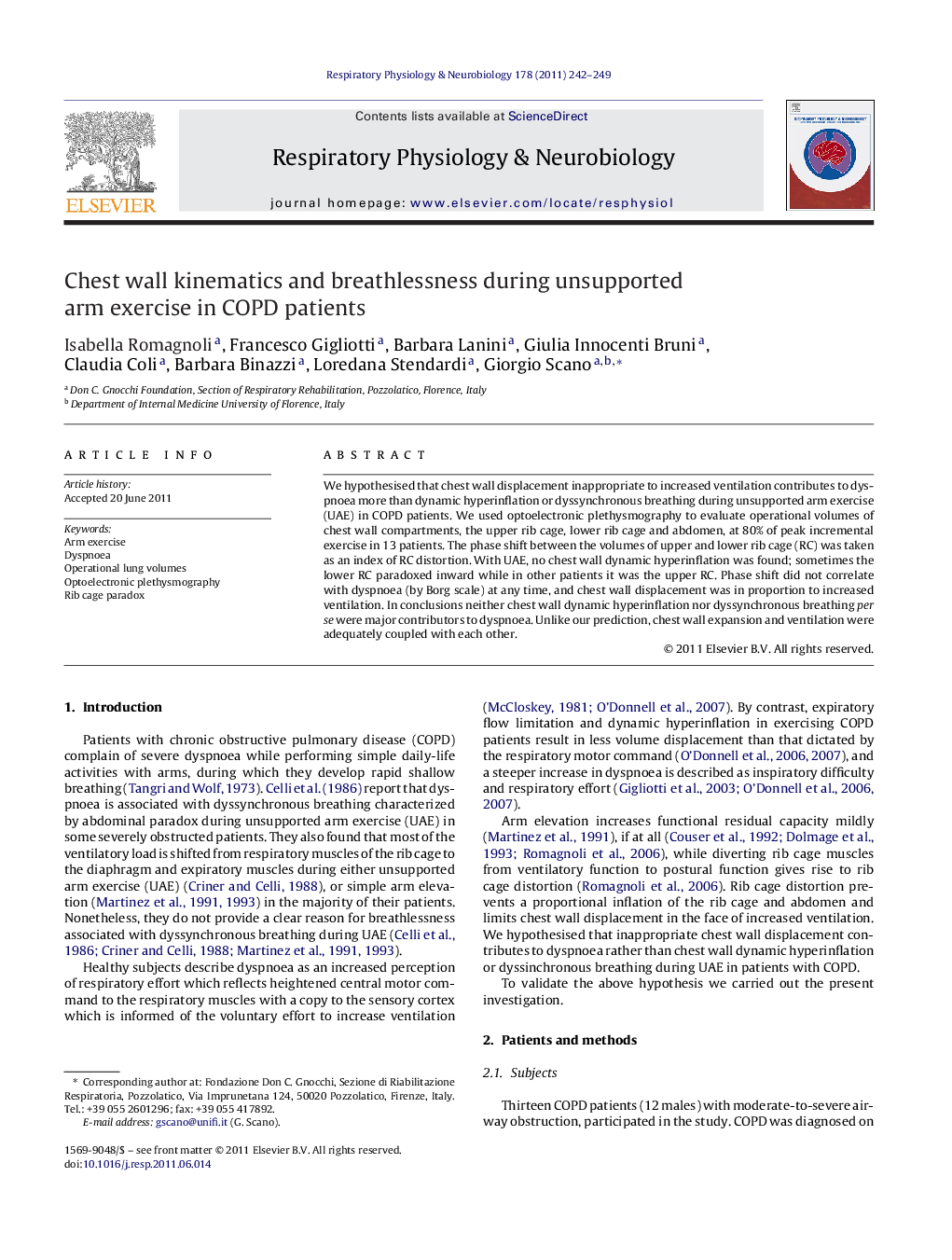| Article ID | Journal | Published Year | Pages | File Type |
|---|---|---|---|---|
| 5926466 | Respiratory Physiology & Neurobiology | 2011 | 8 Pages |
We hypothesised that chest wall displacement inappropriate to increased ventilation contributes to dyspnoea more than dynamic hyperinflation or dyssynchronous breathing during unsupported arm exercise (UAE) in COPD patients. We used optoelectronic plethysmography to evaluate operational volumes of chest wall compartments, the upper rib cage, lower rib cage and abdomen, at 80% of peak incremental exercise in 13 patients. The phase shift between the volumes of upper and lower rib cage (RC) was taken as an index of RC distortion. With UAE, no chest wall dynamic hyperinflation was found; sometimes the lower RC paradoxed inward while in other patients it was the upper RC. Phase shift did not correlate with dyspnoea (by Borg scale) at any time, and chest wall displacement was in proportion to increased ventilation. In conclusions neither chest wall dynamic hyperinflation nor dyssynchronous breathing per se were major contributors to dyspnoea. Unlike our prediction, chest wall expansion and ventilation were adequately coupled with each other.
